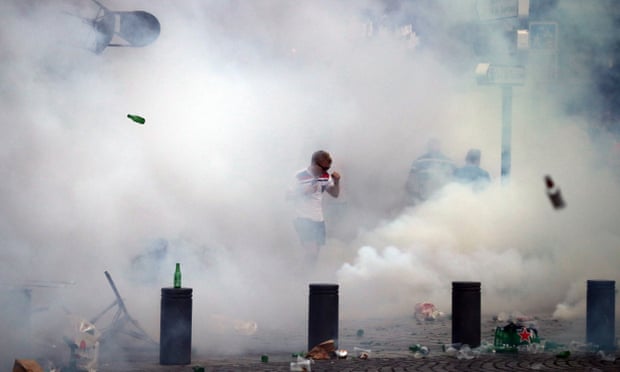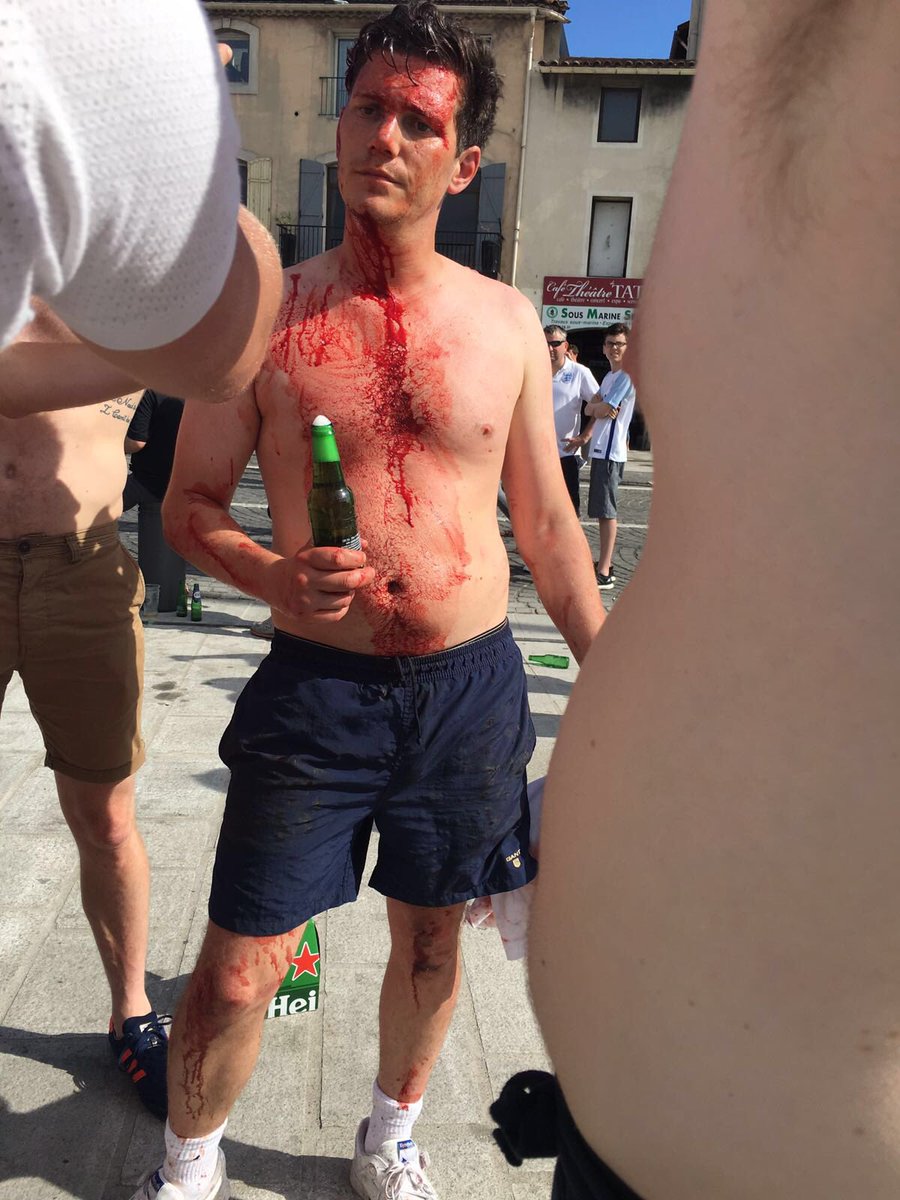"Mother died today. Or, maybe yesterday, I can't be sure." (Albert Camus, The Stranger)
Don't get me wrong, I like bleak. Some of my favorite authors: John Steinbeck, Cormac McCarthy, Annie Proulx, and so many others - I love them because they make me weep. (Inwardly, or sometimes outwardly.) My American Lit. students often ask me: "Why do so many of our books have to be sooooo depressing?" My response is always the same: "Very little great literature is written about bunnies and puppies. Well, there is Of Mice and Men, but,...don't get your hopes up." But even for me, Sartre, Camus, all the French existentialists, wow,..they're so very dark. Clearly there are other European writers who can rival the French, but I asked myself: What is at the root of all the bleakness and broodiness of French literature? We are in the land of baguettes, chocolate, fine cheeses and wine? How is it that every writer seems to be so depressed?
When I visited the library, I found the answer: it is fostered at a very young age. French children's literature is dark - very, very dark. This stuff is nightmare-inducing even for adults. You think Sartre and Camus are bleak? That's nothing. Check out the children's section:
One of Beatrice's first choices was Le Cri de Pingouin:
Cute right? Every book about penguins is cute. Who could write a depressing book about these adorable, waddling, tuxedo-clad birds? Well, apparently the French can. This beautifully-illustrated book tells the story of a penguin wandering on the frozen tundra, searching for some hope in a seemingly meaningless existence. At last, he cries out at the cruel, godless universe, claiming that if there is no one to baptize him, then there is no God in heaven, and he will become an atheist.
In the end, it reads: "But there was no one to sing about the heroic life of the atheist penguin. And therefore one will never know who can tell this story of the egg on the solitary iceberg." After an awkward moment of silence, my daughter asked me: "Is this a Christian book?" Um... nope. Pretty sure no. Clearly, more careful screening of books in the children's section would be necessary.
Some books proved to be fairly easy to judge from the cover. One notable choice was Predateurs, with graphic black and white illustrations, and no words - just to make sure that the French pre-readers can be equally traumatized. The story line is fairly simple. It follows the story of an owl,
a menacing-looking cat,
and a rat, all out prowling at night.
I suppose the author intended some notion of the weak v. strong tale, since the rat is hunted by both the owl and the cat, and runs away, terrified.
The end result is that the owl and the cat run into each other head to head.
Hence, in this flurry of feathers, the rat escapes unscathed to his hidey-hole, kisses his wife, and undoubtedly they commence in procreation so that they can produce another rodent generation to terrify readers.
Admittedly, I am one of the most rodent-phobic people on the face of the planet, but still - how is this considered a children's book? And how is this a "happy ending"? There is only one way that this book could end happily - and that is if both the owl and the cat trap the rat at the same time, and very diplomatically decide to share him by carving him up like a Thanksgiving feast. I can picture this ending, sitting across the table from each other saying things like: "Oh no, Mr. Cat, you're too kind, but I insist you take the drumstick. I know how you love dark meat."
Some books seem to project a political message, even at a very young age. One particularly disturbing choice was Maitre la Cisaille, or Master Shears.
In this story, the people in the village were fighting, calling each other names, and generally being nasty to one another. (This is the part of the story where I was reluctant to teach my daughter some of the French vocabulary words, often censoring them for milder alternatives like "meany-face", which adds a note of irony given the next part of the book.)
So they invite "Master Shears" to their village, who commences to eavesdrop on their private conversations,
and makes a long list of words that they are forbidden to say.
In case the reader might not be certain of the menacing power of "Master Shears" as big-brother / censor / dictator (or even why he's called "Master Shears") the artist included this helpful illustration:
(Yes, yes I believe this is in fact a picture of Master Shears sharpening his razor-sharp beak.)
In response, Master Shears screams "SILENCE!" (Which is, in fact, the first word that my daughter learned in French school, but that probably deserves its own post.)
And what is the reward for this brave young lad who has the courage to speak out against this horrible dictator and stands up for the virtues of individualism and free speech? Well, this is the final illustration of the book:
"And the moral of the story is....." Seriously, what should one tell one's child? What is the moral here? Don't stand up for free speech - it will only get you killed? Or - don't invite a censor with a razor-sharp beak into your home to teach you to talk pretty? I can assure you that my less-than-eloquent explanation was something along the lines of, "Wow, that is one messed-up book."
So we've seen the bleakness, the godlessness, the meaninglessness of French literature, but there remains one top pick that might give some insight into how French children grow up so well-versed in absurdism. I came across this lovely little book, Souliers Rouges, Petits Pois, Etc...
There are some red slippers (souliers rouges) which play a minor role in the book, but I was not able to find any "petits pois" (little peas) and so I think the most important part of the title is "etc." Because there is a lot of et cetera in this little book - enough to make David Lynch's hair stand on end.
It begins with a scene in the woods between the main character, Jo-jo, and a girl simply called "Princesse."
They are talking about the future and how they don't know what will happen next, each admitting to the other that they are afraid.
Jo-jo has to leave on an errand, but when he comes back, all he finds of his beloved Princesse is her red slipper.
Then his bizzare friendly ghost-figure comes to help him, and tells him of the cabin where she's imprisoned. Jo-jo races there, looks in the window, and finds:
And her captor is none other than the dreaded half-man, half-trophy buck.
I truly cannot begin to summarize the weirdness of this book - it defies explanation. But I'll try. Jo-jo at this point is delirious with grief, and searches for Princesse in the forest, and thinks he found her.
But in fact, it is not truly Princesse...
(Again - why are there no parental advisory stickers on these things?)
The author then offers his illustrator free license with the absurdist theme, and I imagine tells him to cram in all the possible nightmare-inducing elements he can imagine. Like bugs:
worms,
and worms which suck you into a black hole, engulf you in even more worms, then spit you up in a new location.
Oh yes, and the pile of worms morphs into a creature with a skeleton-like face, named "Forest." (Because, why not?)
At this point, Jo-jo has one last vision / hallucination of his beloved Princesse,
before seeing her body burning on the pyre.
So if you've ever wondered: What is at the root of the bleakness of the great French absurdist writers? What was it that made Sartre write: "L'enfer, c'est les autres"? Look no further than the children's section in the library.
















































